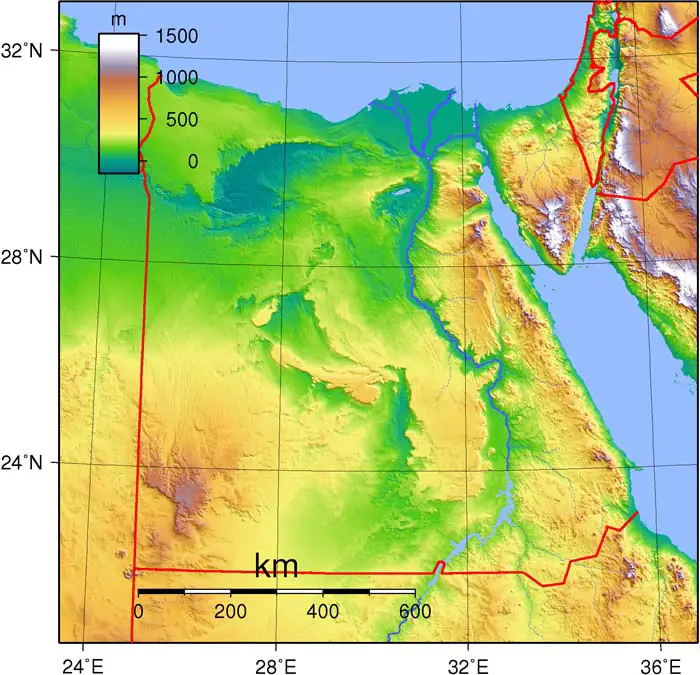Location
The location of ancient Egypt was in North-Eastern Africa, having formed and flourished along the lower portion of the Nile River. It made up most of what is now the modern Arab Republic of Egypt.
Ancient Egypt had four main divisions of its land, the first two being the Upper and Lower Egypt. It may appear odd that the Upper Egypt actually referred to lands to the south, yet this distinction was based on the flow of the Nile. Upper Egypt was little more than a river valley, only about two miles wide at its narrowest and 12 at its widest. Tall cliffs surrounded it on either side. Lower Egypt was the wide delta sitting where the modern city of Cairo is now.
The last two divisions were between red and black land, as previously mentioned. The western desert contained the occasional oasis, but the eastern desert was mostly barren and hostile, save for mines and quarries
Climate In Ancient Egypt
The climate of ancient Egypt was much the same as it is today; a hot, dry desert climate with very little rainfall. Coastal areas would benefit from winds coming off the Mediterranean Sea, but in the interior, these winds were hardly felt and temperature was high, especially in the summer.
Between March and May, a hot, dry wind called the khamasin blows through the desert. This wind causes humidity to drop and temperatures to soar over 110 degrees Fahrenheit. Rain and clouds are more prevalent near Alexandria, which is influenced again by the Mediterranean Sea. The mountainous region of Sinai has the coolest temperatures during the night, due to its elevation. Winter temperatures can drop as low as three degrees Fahrenheit during the night in some towns.
 |
| View of Saharan dust blowing over Egypt and towards the Middle East |
The Deserts of Ancient Egypt
The deserts of ancient Egypt were the Red Lands, situated on both sides of the Nile.
The Western Desert was actually part of the Libyan Desert and covered 262,000 square miles. Its geography largely consisted of valleys, sand dunes and some mountainous areas. This desert also contained oases, five of which are still known today.
The Eastern Desert extended out to the Red Sea. It is part of what is known as the Arabian Desert today. This desert was arid and barren, but the ancient Egyptians used it extensively to mine various stones. The geography of this desert consisted of more mountains and rocky areas than sand dunes.
 |
| Topography of Egypt |
The River Nile
The well-known summation of Egypt's existence as the "gift of the Nile" came from the Greek philosopher Herodotus. The philosopher rightly observed that everything that caused the Egyptian civilization to exist and flourish came from the Nile. Very little rain fell in ancient Egypt, certainly not much more than falls in the present, and so drinking water, washing water, water for crops and animals, all of it came from the Nile.
The headwaters of this great river lie deep in Africa and every spring, snowmelt from the Ethiopian highlands poured down into the river, causing it to slowly rise. The Nile floodwaters were extremely predictable, overflowing sometime in late July, then receding in November, wildly contrasting to the floods in Mesopotamia, which were unpredictable and extremely destructive when they did happen. Ancient Egypt flourished as the garden of the ancient world.
http://www.ancient-egypt-online.com/ancient-egyptian-geography.html


No comments:
Post a Comment